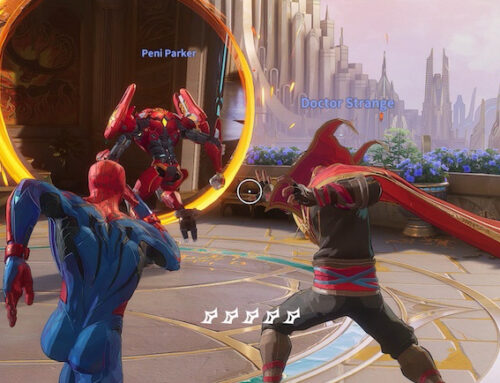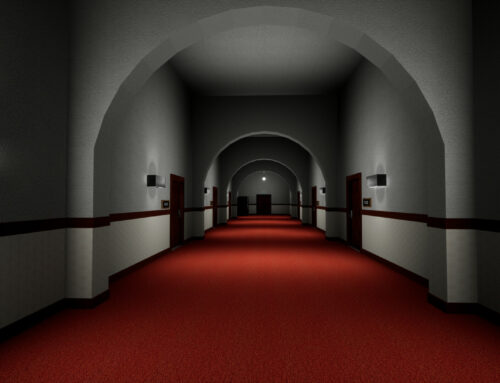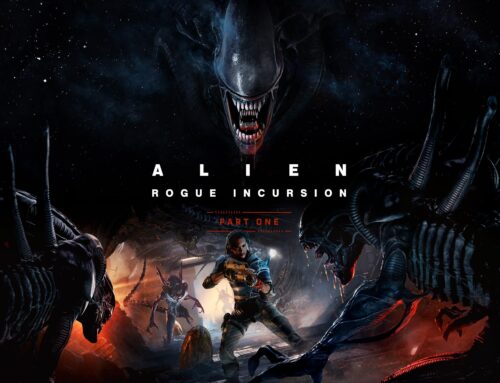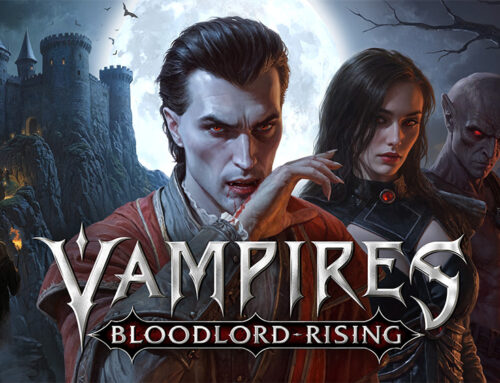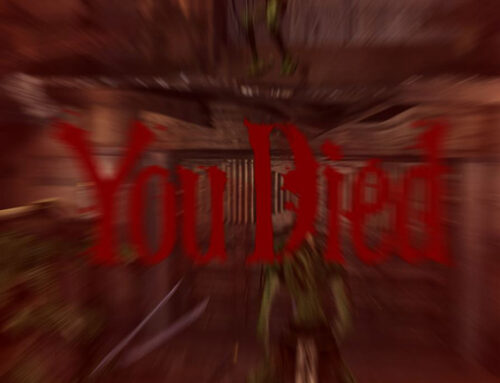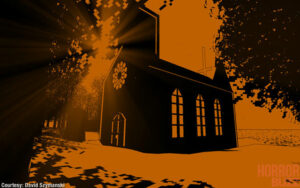 “The Music Machine” is not a title that inspires much fear. It sounds more like a rhythm game than any sort of horror, but it comes from creator David Szymanski (“Fingerbones”, “The Moon Sliver”) who has an impressive track record with small, independent horror video games. Given what a huge fan I am of his previous work, there was no way that I was going to let an odd title stop me from giving this game a shot.
“The Music Machine” is not a title that inspires much fear. It sounds more like a rhythm game than any sort of horror, but it comes from creator David Szymanski (“Fingerbones”, “The Moon Sliver”) who has an impressive track record with small, independent horror video games. Given what a huge fan I am of his previous work, there was no way that I was going to let an odd title stop me from giving this game a shot.
“The Music Machine” is the story of Haley, a rebellious thirteen year old girl, and Quintin, the vengeful ghost who is possessing her. As the game starts, Quintin has brought Haley to an uninhabited island which was previously the site of a quadruple homicide. His goal in bringing her there is simple enough: Quintin wants to find a satisfactory way in which to kill Haley. The game starts right after the pair is dropped off on the island, with no way back to shore. The player than assumes the role of Quintin and guides Haley around the island, trying to figure out both what happened to the bible camp that used to be on the island and what the best way would be to murder Haley.
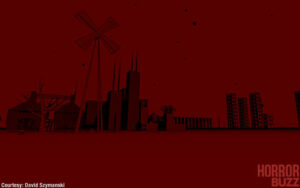 While the models that “The Music Machine” uses are fairly simple, they still look great, Szymanski actually built them himself rather than using stock Unity assets. However, they are very blocky and probably would not look very good if not for the other striking visual element of the game: its strict two-tone color palette. Each scene is given one single color for anything illuminated, and black for anything in shadow. There is no element of shading involved. This creates a lot of very striking images, and definitely adds to the sense of wrongness and unease that permeates the game. However, this is not a choice without trade-offs. In shadowy areas, it can become very hard to tell where exactly you are going, since everything in front of you is pitch black.
While the models that “The Music Machine” uses are fairly simple, they still look great, Szymanski actually built them himself rather than using stock Unity assets. However, they are very blocky and probably would not look very good if not for the other striking visual element of the game: its strict two-tone color palette. Each scene is given one single color for anything illuminated, and black for anything in shadow. There is no element of shading involved. This creates a lot of very striking images, and definitely adds to the sense of wrongness and unease that permeates the game. However, this is not a choice without trade-offs. In shadowy areas, it can become very hard to tell where exactly you are going, since everything in front of you is pitch black.
It’s hard to say much about the music of “The Music Machine” because there just is not very much of it. Each area has a few minimally-invasive droning sounds that form something of a soundtrack, but that’s just about all there is to it. There are a few sound effects, but when they aren’t purely functional (such as the sound of a button being pressed) they tend to be white noise more than anything else. Given the game’s title, I can’t help but feel it’s a bit ironic that audio is its shortcoming.
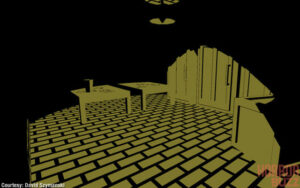 If you are familiar with any of Szymanski’s other games, then you know exactly how “The Music Machine” plays. There are very few elements of traditional gameplay to be found. There are no chase scenes, very little that could be considered a puzzle, no real game-over conditions, etc. Instead, Szymanski’s games are more like a haunt attraction. It’s not that they lack interactivity exactly, but more that they are about giving the player an environment and narrative to explore. They are the kind of game sometimes (and not always affectionately) referred to as a “walking simulator.”
If you are familiar with any of Szymanski’s other games, then you know exactly how “The Music Machine” plays. There are very few elements of traditional gameplay to be found. There are no chase scenes, very little that could be considered a puzzle, no real game-over conditions, etc. Instead, Szymanski’s games are more like a haunt attraction. It’s not that they lack interactivity exactly, but more that they are about giving the player an environment and narrative to explore. They are the kind of game sometimes (and not always affectionately) referred to as a “walking simulator.”
If you’ve already played any of the creator’s other works, there’s a good chance that you already know whether you will like “The Music Machine” or not. For anyone unfamiliar with Szymanski’s other work, “The Music Machine” is a story-rich game with amazing visuals and an oppressive atmosphere. The title may be a bit odd, but it’s worth taking a chance on this game.

